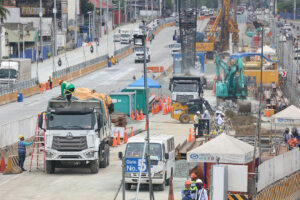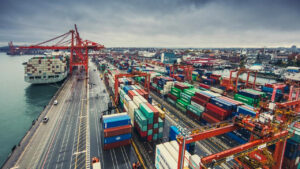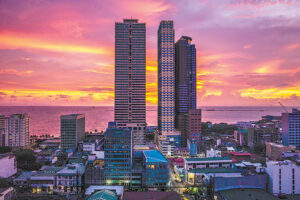GOVERNMENT SPENDING is likely to slow in the first half of 2025 due to the election ban on public works and congressional insertions in the national budget, the Department of Budget and Management (DBM) said.
Budget Assistant Secretary Romeo Matthew T. Balanquit said government spending in the first two quarters “might be lower” compared with the same period in 2024 due to the public works ban ahead of the May elections.
The Commission on Elections (Comelec) will implement a ban on public works on March 28 or 45 days before the May 12 elections. Social welfare dole-outs are also prohibited during the period.
The Development Budget Coordination Committee earlier said there “may be a slowdown in project execution during the first half of 2025 on account of the upcoming midterm national and local elections.”
However, the DBM said that infrastructure spending ahead of the election will not be “disrupted” by the election ban, as “the phasing of the projects is already planned, especially in the transport sector.”
“The only infrastructure projects affected are those worth P707 billion, covering over 12,900 projects, the bulk of which are under the Department of Public Works and Highways (DPWH),” DBM Undersecretary Goddes Hope O. Libiran said.
At the same time, Mr. Balanquit said budget releases may be slower as the congressional adjustments under the 2025 General Appropriations Act will be subject to a process called For Issuance of Special Allotment Release Orders (FISARO) before being released.
The SARO will only be released once agencies meet the necessary requirements and secure approvals from the Executive Secretary and the Office of the President.
“Now, the release might not be that significant because of the P757-billion [adjustments], which is around 11% or 12% of the total budget. So, it’s really a big amount,” Mr. Balanquit told reporters on Jan. 16.
Last year, most of the national budget was already released around the first month without the required conditions.
Meanwhile, former Finance Secretary Margarito B. Teves said that spending on public works usually falls in April and May during election years due to the 45-day ban.
“However, we see the impact as minimal given that the National Government always seeks the exemption of infrastructure projects from the ban, particularly those of national significance,” he told BusinessWorld in an e-mail over the weekend.
Mr. Teves added that the ban will affect projects at the local and district levels more than those at the national level.
“Historically, government spending and therefore gross domestic product spending has dipped slightly on a quarter-to-quarter basis, but an uptick is usually shown in the quarter after the elections,” Ateneo School of Government Dean Philip Arnold “Randy” P. Tuaño told BusinessWorld.
He added that the government had already disbursed a “significant amount” on infrastructure projects, months before the election period started.
The Comelec has exempted 48 infrastructure projects of the Public-Private Partnership Center such as the Metro Manila Subway Project.
“We will expect a continuation of infrastructure growth in the run-up to the May period,” Mr. Tuaño said.
For the rest of 2025, Mr. Teves said the level of public spending on infrastructure will largely depend on the improvement in the absorptive capacity of the DPWH to carry out projects given that it received more than P1 trillion in the national budget.
“Moreover, the frequency and severity of adverse weather conditions such as typhoons could cause disruptions and delays in the implementation of infrastructure projects especially those in the hard-hit areas,” he said. — Aubrey Rose A. Inosante






